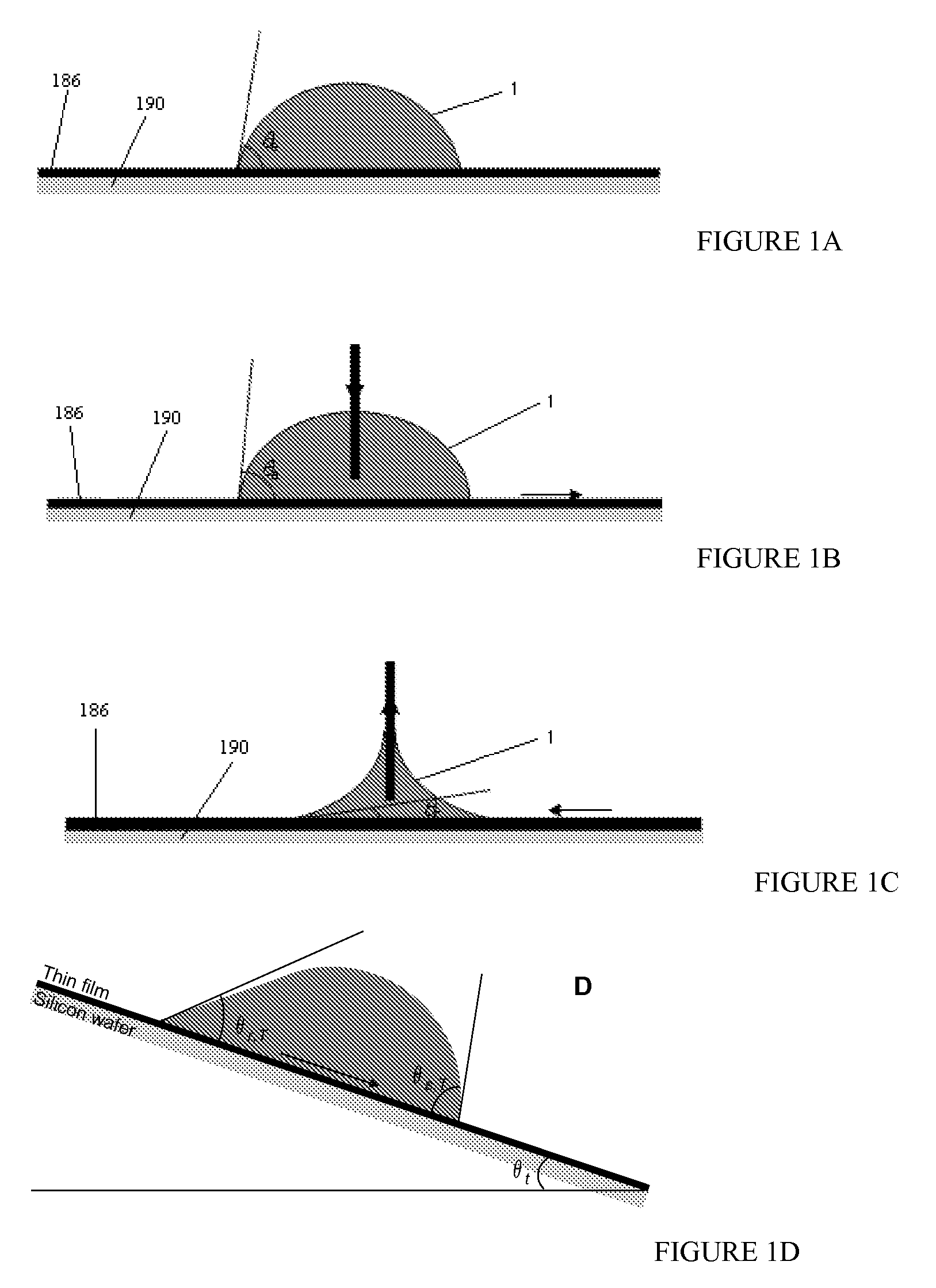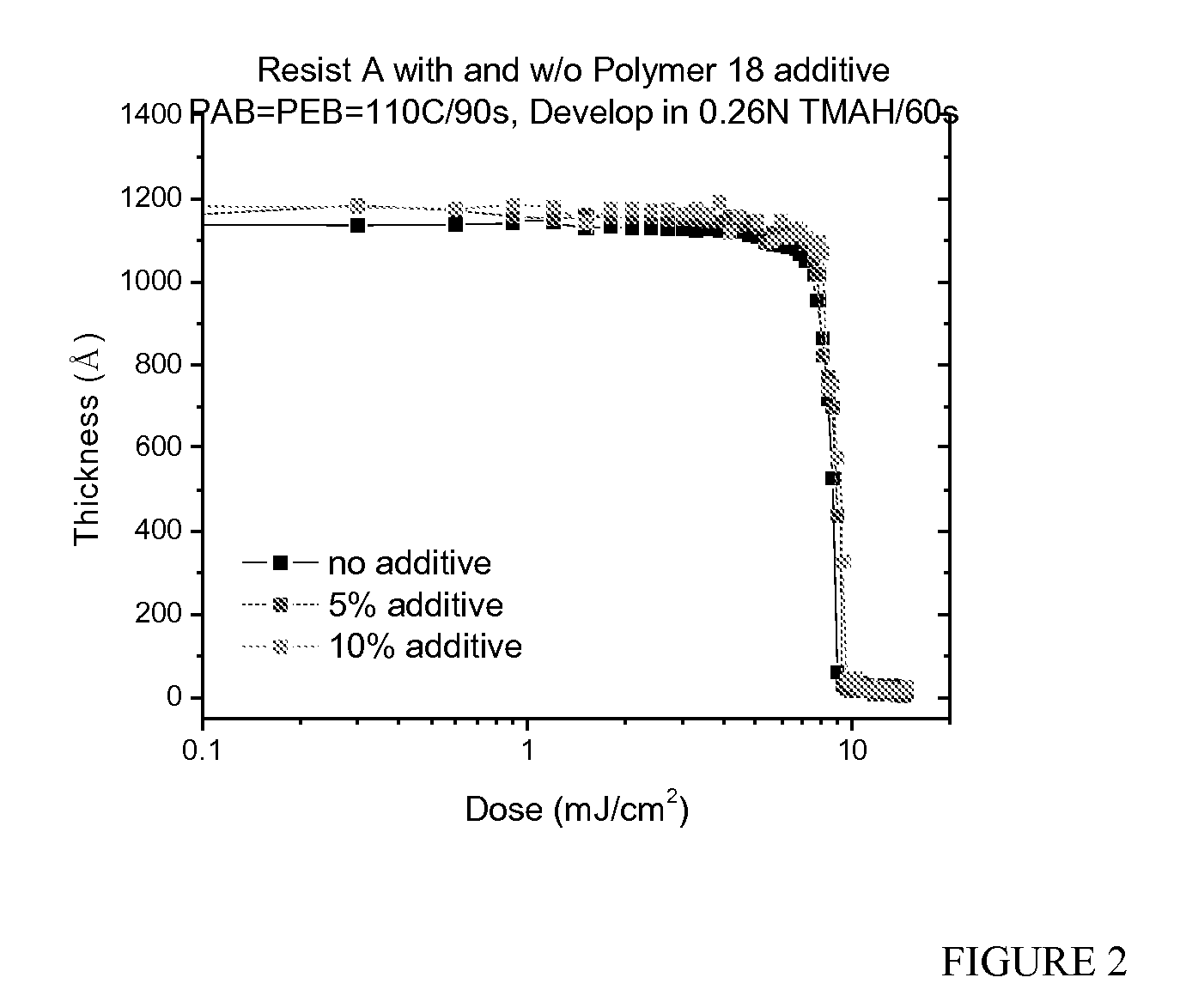Self-topcoating resist for photolithography
a self-topcoating resist and photolithography technology, applied in the field of photolithography, can solve the problems of adding process and material cost, affecting the performance of photoresist, and destroying the lens or contamination of a 40 million dollar lithography tool
- Summary
- Abstract
- Description
- Claims
- Application Information
AI Technical Summary
Problems solved by technology
Method used
Image
Examples
example 1
Synthesis of Poly(1,1,1,3,3,3,-hexafluoroisopropyl methacrylate-co-methacrylic acid) (Polymer 1)
[0108] 1,1,1,3,3,3,-hexafluoroisopropyl methacrylate (4.72 grams, 0.02 mole), methacrylic acid (1.72 grams, 0.02 mole) and 20 grams of tetrahydrofuran (THF) were placed in a round bottom flask equipped with a condenser and a nitrogen inlet. 2,2′-Azobisisobutyronitrile (AIBN) (0.26 grams, 0.0016 moles) and 1-dodecanethiol (0.24 grams, 0.0012 moles) were added to this solution and stirred until dissolved. The solution was then degassed using four vacuum / nitrogen purges. The contents were then heated to reflux for 18 hours. Afterwards, the solution was added dropwise into hexanes (500 ml). The precipitated polymer was filtered (frit), washed twice with hexanes (50 ml) and dried under vacuum at 60° C. Yield: 5.2 grams. Mn=4,721. Polydispersity 1.55. Tg: 150° C.
examples 2-15
Synthesis of Polymers 2-15
These polymers were synthesized by the same procedure described for Polymer 1, starting with appropriate monomers in required quantities.
example 16
Synthesis of Poly(norbornane-alt-maleic acid 4,4,5,5,5-pentafluoro-1-pentanol monoester) Topcoat (Polymer 16)
[0109] a. Synthesis of Norbornene-alt-maleic anhydride copolymer: Example X: Synthesis of Poly(norbornene-alt-maleic anhydride—V601 initiator). A mixture of norbornene (37.66 g; 0.4 moles), maleic anhydride (39.22 g; 0.4 moles), 80 g ethyl acetate, and 80 g tetrahydrofuran were heated to reflux in a 500 mL round-bottom flask with stirring under a nitrogen atmosphere. The mixture was cooled slightly, and dimethyl 2,2′-azobisisobutyrate (V-601) (3.68 g; 16 mmol) was added all in one portion. The mixture was nitrogen flushed and heated to reflux under nitrogen for 19 hours. The reaction mixture was cooled to room temperature, diluted with 100 mL of tetrahydrofuran, then precipitated into 3 liters of stirred 2-propanol. The resulting solid was collected, washed with three 150 mL portions of 2-propanol and residual solvent removed under vacuum (100 milliTorr) to obtain a constant...
PUM
 Login to View More
Login to View More Abstract
Description
Claims
Application Information
 Login to View More
Login to View More - R&D
- Intellectual Property
- Life Sciences
- Materials
- Tech Scout
- Unparalleled Data Quality
- Higher Quality Content
- 60% Fewer Hallucinations
Browse by: Latest US Patents, China's latest patents, Technical Efficacy Thesaurus, Application Domain, Technology Topic, Popular Technical Reports.
© 2025 PatSnap. All rights reserved.Legal|Privacy policy|Modern Slavery Act Transparency Statement|Sitemap|About US| Contact US: help@patsnap.com



